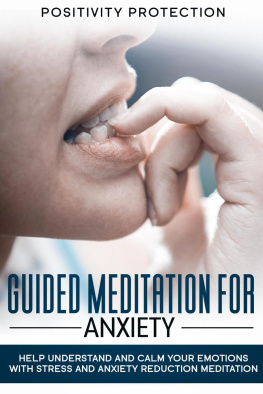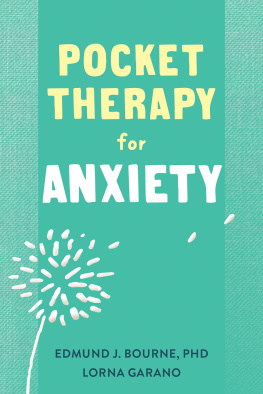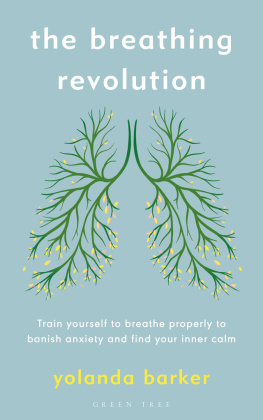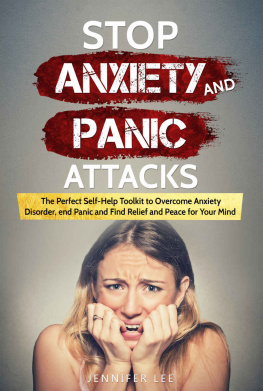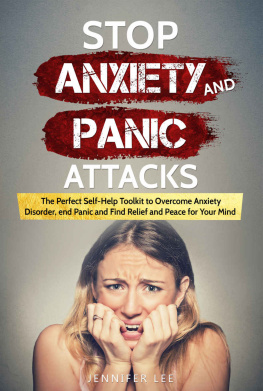Were Giving Away Something BIG..
And It only Takes 30 Seconds of Your Time..
.. CLICK HERE TO FIND OUT MORE ..
Available for Limited Time Only. Dont Miss Out!
.. CLICK HERE FOR MORE INFO ..
Introduction
Are you suffering from anxiety? Do you feel over-stressed for most of your day? Does it seem like the little things in life unbalance your calm and get to you more easily now? Or have you tried breathing exercises before but found them ineffective?
Stress, panic, and anxiety are a part of daily modern life, and the longer they are ignored, the worse they become. While some people are lucky enough to find their own internal calm, most just pretend to be fine until these problems lead to graver health issues like heart complications, respiratory disorders, or panic attacks.
Oftentimes, you find yourself in stressful situations where relaxing through external means just isn't practical or feasible. Advice from experts telling you to keep yourself calm is about as useful as a plastic spoon when fighting an alligator. So what can you do to help yourself without the need to seclude yourself from your stress-inducing surroundings? If you've tried such exercises before, and found that they don't work, what are you doing wrong?
That is precisely the raison d'tre of this guide. Im going to guide you through exercises that can be done immediately, quietly, and on the down-low, without the need for anything other than regulating your own breathing.
If you wonder about the authenticity of such methods, or how to find time for them, don't worry, we'll clear up several misconceptions about why these methods won't work. After all, these exercises form the base of many spiritual philosophies, and several cultures throughout the civilized world absolutely swear by them. Theres a reason for that. Simply put, these exercises are nothing short of effective.
So, are you ready to unlock the pathway to calm without the need for any feel-good pill-popping prescriptions or expensive therapies? Are you ready to learn the most basic and easiest of ways to beat anxiety through the regulation of your own inner peace? Lets get started!
Copyright 2014 by LCPublifish LLC - All rights reserved.
This document is geared towards providing reliable information in regards to the topic and issue covered. The publication is sold with the idea that the publisher is not required to render accounting, officially permitted, or otherwise, qualified services. If advice is necessary, legal or professional, a practiced individual in the profession should be ordered.
- From a Declaration of Principles which was accepted and approved equally by a Committee of the American Bar Association and a Committee of Publishers and Associations.
In no way is it legal to reproduce, duplicate, or transmit any part of this document in either electronic means or in printed format. Recording of this publication is strictly prohibited and any storage of this document is not allowed unless with written permission from the publisher. All rights reserved.
The information provided herein is stated to be truthful and consistent, in that any liability, in terms of inattention or otherwise, by any usage or abuse of any policies, processes, or directions contained within is solely and completely the responsibility of the recipient reader. Under no circumstances will any legal responsibility or blame be held against the publisher for any reparation, damages, or monetary loss due to the information herein, either directly or indirectly.
Respective authors own all copyrights not held by the publisher.
The information herein is offered for informational purposes solely, and is universal as so. The presentation of the information is without contract or any type of guarantee assurance.
The trademarks that are used are without any consent, and the publication of the trademark is without permission or backing by the trademark owner. All trademarks and brands within this book are for clarifying purposes only and are the owned by the owners themselves, not affiliated with this document.
Chapter 1: How Do Breathing Exercises Work Against Anxiety?
Many people especially the ones who've been improperly trained or have half-baked knowledge on the matters scoff at the idea of beating anxiety and stress through breathing exercises. However, scientific research has conclusively proven that breath regulation does work irrespective of who does it and where. This is unlike the constant disclaimers on pharmaceutical therapies that claim that the same drugs could have different magnitudes of effectiveness on different people. How, then, do these exercises benefit their practitioners?
The human body has two major classifications under its nervous system: central and peripheral. Among other things, the peripheral nervous system also contains the autonomic nervous system, which controls the activity of organs, glands, and various involuntary muscles and functions of our body, like peeing yourself out of fear.
The autonomic nervous system contains two complementary systems: the sympathetic and parasympathetic nervous systems. Think of these two as twins, and contrary to the image that the names may conjure, the sympathetic nervous system is the hyper-caffeinated, over-hyped, constantly restless, and mischievous twin while the parasympathetic system is the one that has a calming effect and keeps its sibling from blowing itself up, as it were. The sympathetic nervous system is the part that deals with fight or flight impulses, and is responsible for more adrenalin secretion, accelerated pumping of the heart, and all those functions that are designed to keep your body going in times of emergency without keeling over from exhaustion. Unfortunately, all those nasty functions also make you feel like you're even more panicky, stressed, or anxious.
While it may be for a good reason, these responses are hardly helpful when you're already stressed out and need to relax more than anything else. This is where the parasympathetic system comes in, which smoothly kicks its over-hyper sibling in the fork of its legs and tells it to calm the hell down. It reduces adrenalin function, and basically brings your body out of emergency mode and into normal and relaxed functions.
The problem is as the name should tell you the autonomic systems are self-regulating, involuntary, and not really under our conscious control. So how can we activate the parasympathetic system when we need to relax and calm ourselves?
Whenever we are in a state of emergency or heightened activity, the message that's going from our respiratory organs to our brain is: I'm running out of air, I need more juice, make it happen pronto! But this same message is sent when we're over-stressed about something, which can lead to anxiety attacks or hyperventilation, which sends the same message again, even though that is the worst thing possible at the moment. Our bodies are a bit silly like that, we have a few bugs to iron out here and there.
Out of all the triggers that help control that involuntary system which by definition is not under our control the only thing that we can actively do at that point is to control our breathing to change the messages our body is sending. At such a time, regulating the depth and pattern of our breathing changes the signals being sent from our lungs to our brain, and results in innumerable biochemical reactions happening one after the other that end up releasing calming, anti-anxiety, or simply delicious chemicals like endorphins and their stress-whooping brethren.




